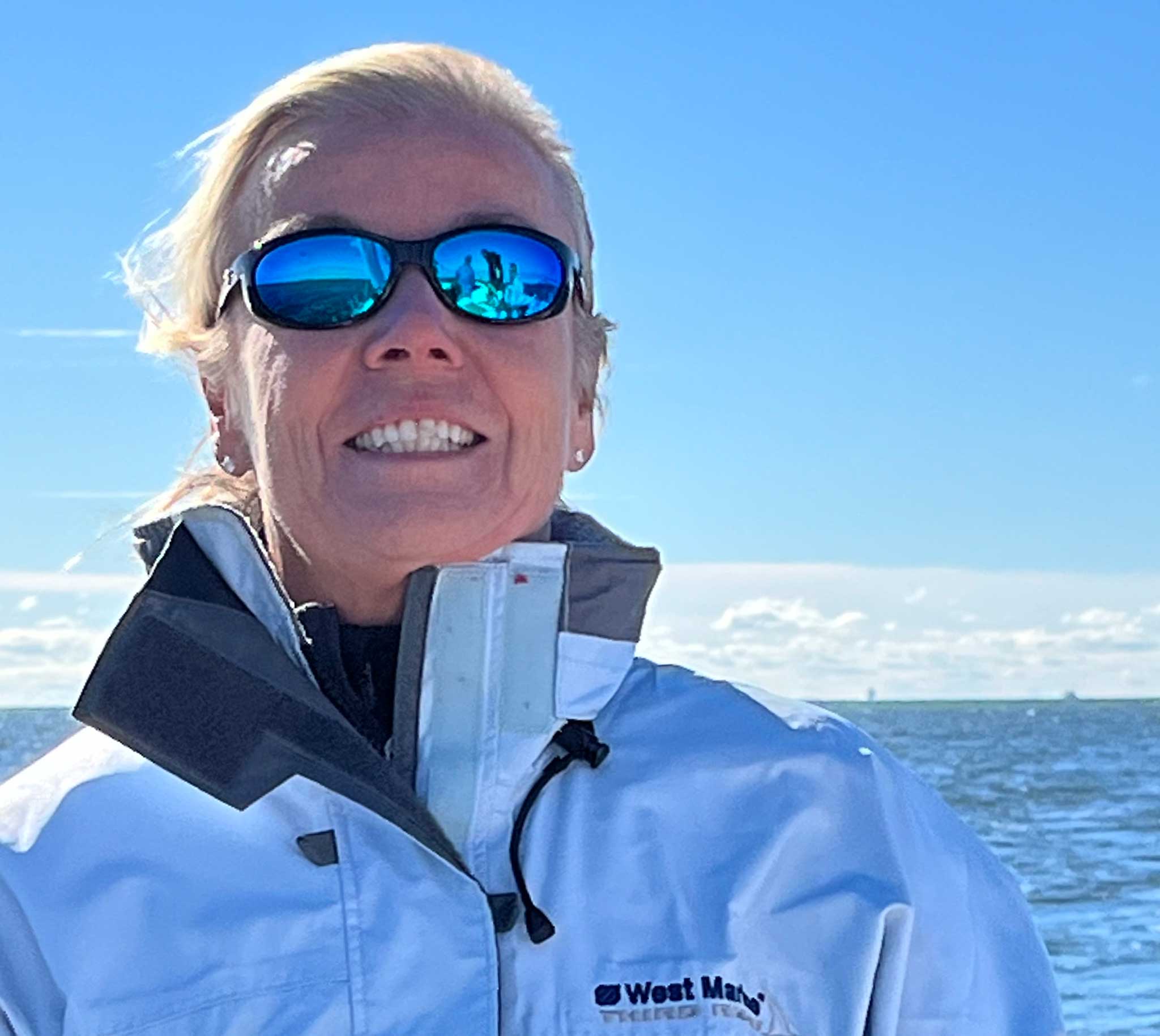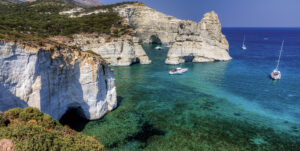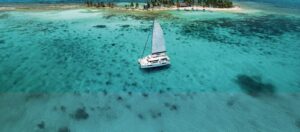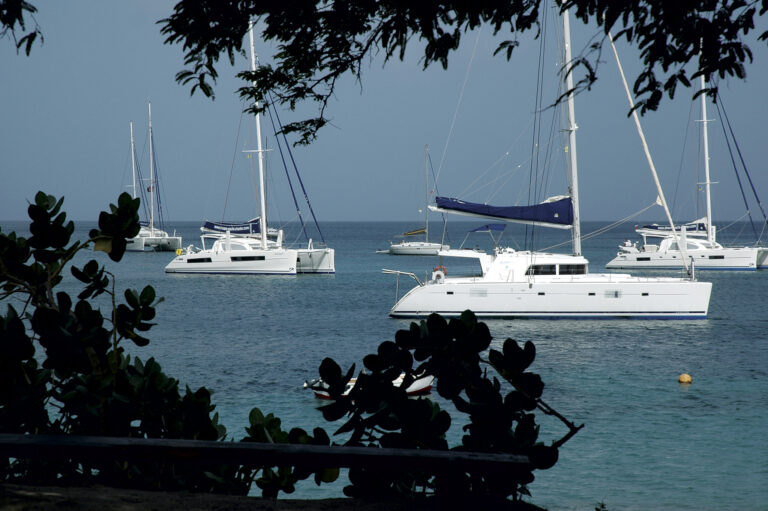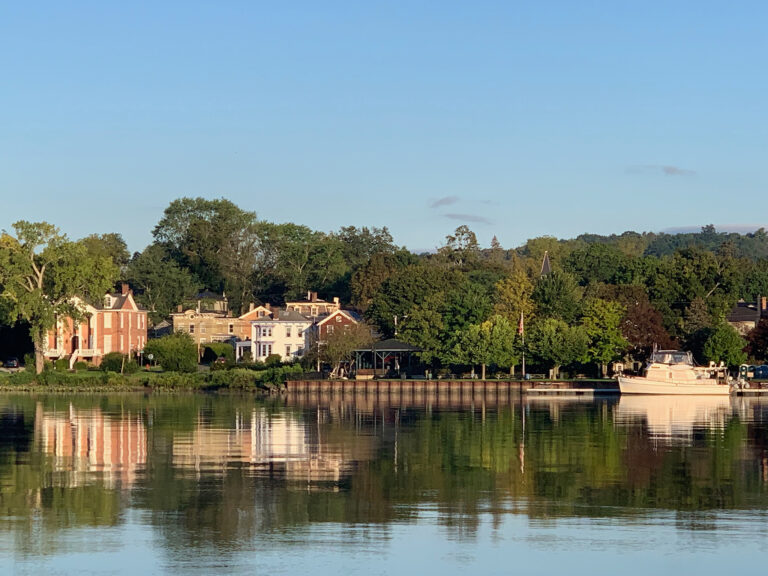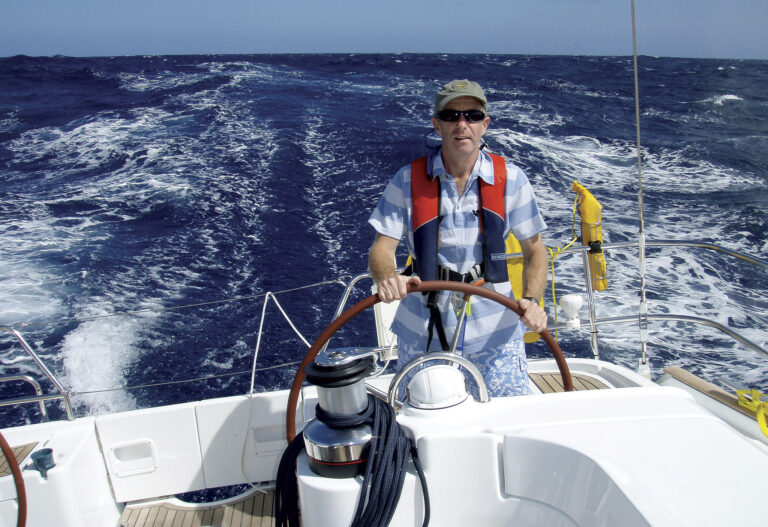The Caribbean is fertile ground for bareboat charters, and even if you’ve visited often, chances are there is much left to be explored. There are plenty of hidden gems that have pristine beaches, spectacular scenery, crystal waters and, mostly, anchorages that are inviting exactly because you may be the only one with the anchor down. Who better to ask about these not-to-be-missed destinations than the charter operators themselves?
Carriacou
Why Go
Carriacou, sometimes called the “land of reefs” or “land between the reefs,” is known for its shallow clear waters, which are ideal for snorkeling. Carriacou’s coastline is mostly wave-cut coral, and it comes in different colors. Manchineel Bay and Carenage Bay near Harvey Vale have small beaches of black volcanic sand, while the sand at Anse La Roche and Hillsborough Bay is white. Although it is the largest of the Grenadines islands, Carriacou is a dependency of Grenada, 30 miles to the south. Home to 6,000 people, Carriacou mixes primarily British and African influences, with a bit of French history added for good measure.
A great way to stretch your legs is with a hike through the High North Nature Reserve to the island’s highest peak. Alternately, a day of lounging may be spent at the idyllic Paradise Beach, with its aquamarine water, white sand beach and thousands of starfish. If you time your charter correctly, you may also be able to experience one of the four major cultural festivals including Carnival (February or March), the Carriacou Regatta (August), Parang (December), and the Maroon String Band Music Festival (April).
FACT FILE
To visit Carriacou, it’s best to charter a boat in Grenada, a large island served by many flights from the States. Charter options include Dream Yacht Charter (dreamyachtcharter.com), Horizon Yacht Charters (horizonyachtcharters.com), Sunsail Charters (sunsail.com) and Photo courtesy Grenada Tourism Authority (moorings.com). There’s no need to check in/out of the country if you take a boat from a Grenada charter base.
“Carriacou is a gem that should certainly be a stop along the journey from Grenada to the Tobago Cays. You can find a mooring sheltered on the inside of Sandy Island and head to the beach of your own deserted island for a day of picnicking and snorkeling.”—Brittany Weatherby Riley, Marketing Manager, Sunsail Charters
Guadeloupe
Why Go
Guadeloupe is not one island, but rather an island group, and also a French territory in the Leeward Islands. Resembling a butterfly, its two largest islands, Basse-Terre and Grande-Terre, are separated by the Salée River, with Pointe-à-Pitre, the largest city in Guadeloupe and a tourist destination, on the eastern bank. The hilly Grande-Terre has long beaches and sugarcane fields, while Basse-Terre is home to the 5,000ft La Grande Soufrierè volcano and the Parc National de la Guadeloupe, whic has miles of hiking trails and the three-tiered 350ft Carbet Falls. Divers won’t want to miss the Jacques Cousteau Underwater Reserve on the western side of Basse-Terre. (The anchorages on Basse-Terre can get rolly, with the best one perhaps being Deshaies, while anchoring near Pointe-a-Pitre is usually comfortable and close to the airport if you have to pick up crew.)
On the quieter, nearby islands of Les Saintes, Marie Galante and Desirade—each about a half-day’s sail away—many of the inhabitants still wear traditional Creole dress, and the mix of African, European and East Indian cultures makes for great photos and even better dining, as the cuisine is a blend of French and Creole influences. Consistent trade winds between 10 and 20 knots provide great sailing conditions, and miles of pristine beaches make for perfect for swimming and snorkeling once the anchor is down.
FACT FILE
Dream Yacht Charter (dreamyachtcharter.com) has a base right in Pointe-à-Pitre, which is a 30-minute ride from the airport. For those looking for a bit of boisterous passagemaking, you can also charter from Sunsail (sunsail.com) or Horizon Yacht Charters (horizonyachtcharters.com) and sail 60 miles south from Antigua, but that will be challenging.
“Petite Terre is just a paradise perfect for snorkeling with dolphins, turtles, small sharks and lots of coral fish. The people are friendly and the beaches are amazing.”—Soizic Dubois, Interim Base Manager, Dream Yacht Charters, Guadeloupe
Barbuda
Why Go
Barbuda is due north and about a five-hour sail from Antigua. It’s Antigua’s shy little sister, a welcome respite from the non-stop partying Antigua is known for. Nearly undeveloped, Barbuda’s one town, Codrington, is home to most of its population of only 1,500. Low Bay on the west coast offers 11 miles of white and pink sand beach and spectacular sunsets.
Beachcombing, snorkeling and fishing are the main activities, but don’t miss the Frigate Bird Sanctuary, especially if it is nesting season. Inquire about a water taxi across the lagoon to visit both the town and the sanctuary.
Christopher Codrington founded sugar plantations on Barbuda and Antigua in the 1680s, and the family’s influence in the sugar and slave trades continued through the 18th century. Today, you can visit the ruins of the Codrington estate, Highland House, on the island’s highest peak (124ft). On the south coast is the 56ft Martello castle and tower, a fortress that was used for defense and as a vantage point from which to spot valuable shipwrecks on the outlying reefs.
FACT FILE
Fly into Antigua to reach the island’s many charter companies, including Sunsail (sunsail.com), Dream Yacht Charter (dreamyachtcharter.com) and Horizon Yacht Charters (horizonyachtcharters.com). In case you need to re-provision on Barbuda, you can reach the town of Codrington, but you’ll need to take a water taxi from the western anchorage.
“The anchorage off Cocoa Point has miles of pristine creamy-pink beach. Enjoy shallow crystal clear water and snorkeling on the coral reef with a large variety of fish and turtles. This is one of the quietest and most relaxing anchorages in the Caribbean.” —Alcid Belgrave, Briefer, The Moorings, St. Martin
St. John
Why Go
St. John is a part of the U.S. Virgin Islands, which means your cell phone will work without additional plans, and you don’t need to check into the country when coming from the States. Most of St. John is a national park with excellent anchorages on the north and south sides. Caneel, Maho and Francis Bays are beautiful northern spots, with Leinster Bay offering great snorkeling and the ability to dinghy in and visit the Annaberg Sugar Plantation ruins. Salt Pond, Lameshur Bay, Hurricane Hole or Coral Bay (with laid-back locals and funky bars) are on the south side.
There are no marinas, and the whole island has a relaxed atmosphere. Cruz Bay has some of the best shops in the Caribbean (visit Mongoose Junction) and there is a variety of restaurants, from gourmet to ethnic grub, as well as plentiful pubs.
St. John enjoys a nine-month tourist season, and there are plenty of moorings to keep your anchor from damaging the underwater terrain. Be sure to watch for red and green markers signifying dinghy trails to shore—many spots are shallow even for the tender. Stretch your legs on one of the many hiking trails and remember, there are no privately owned beaches in the U.S. Virgin Islands, so take your pick and enjoy.
FACT FILE
Flights into St. Thomas, right next to St. John, are frequent, and you can still use your U.S. phone and data plan as normal. The CYOA base (cyoacharters.com) is in Frenchtown on Charlotte Amalie Harbor (about six miles from St. John) so there’s no hassle with checking into the U.S., or you can charter from a company in the British Virgin Islands. You will, however, need to check in/out if you start in the BVI.
“There’s an awesome abundance of inexpensive ($15) moorings all around St. John, which is a wealthy island. There is no real concentration of the population or large resorts so it’s less developed, and at night all you see is stars, since there’s little light pollution.” —Jay Pennington, CYOA Yacht Charters
Culebra
Why Go
The island of Culebra is about midway between St. Thomas to the east and Puerto Rico to the west. However, despite its proximity to two major Caribbean destinations it is a remote and quiet island that is a perfect place to unplug. There are no major resorts, few noisy restaurants and basically no tourist traps. Anchorages are never crowded, and the mooring balls are free—two major selling points for anyone done with the Caribbean party scene.
A three-hour motorsail to windward will bring you from Fajardo, Puerto Rico to Culebra, which was declared a protected wildlife refuge by Theodor Roosevelt in 1909 and is a nesting site for three species of sea turtles. Don’t skip Culebrita, the little sister to the east, where you can hike to the ruins of an old lighthouse or snorkel with turtles near the appropriately-named Tortuga Beach. Also be sure to check out the rocky tidal pools full of small fish and crabs.
Culebra used to be a Navy gunnery and bombing practice site until the 1970s, but thankfully, that’s all done now, and you can stroll the streets of Culebra Town in peace. Although there are few restaurants, shacks serving Puerto Rican street food can always be found, so grab some chicken or pork kebabs and fried plantain dough stuffed with crab or beef with a cold cerveza to wash it down.
FACT FILE
Fly into Puerto Rico and charter from the Sail Caribe (sailcaribe.com) base in Fajardo. You won’t need a passport since technically, you will not have left the United States. Alternately, you can charter from CYOA Charters (cyoacharters.com) on St Thomas or Dream Yacht Charters (dreamyachtcharter.com), Sunsail (sunsail.com) or The Moorings (moorings.com), in the British Virgin Islands and sail west, although in this case you will need to check in at Culebra Town at the airport, which is within walking distance of the anchorage.
“Culebra, one of the two main Spanish Virgin Islands, may be referred to as the ‘last virgin’ because much of it is a federal fish and wildlife preserve, so it’s undeveloped and pristine. Locals call the island ‘La Isla Bonita.’ Bahia Tortuga on nearby Culebrita may be the most beautiful beach in the Caribbean.”—Jim Veiga, Owner and Base Manager, Sail Caribe Yacht Charters
St. Kitts
Why Go
St. Kitts and nearby Nevis form a two-island country in the Leeward Islands. The capital, Basseterre, is an attractive waterfront town and one of the oldest ports in the eastern Caribbean, so there is much to see. On the must-do list is Brimstone Hill Fortress National Park, a Unesco World Heritage site since 1999. It is a well-preserved example of 17th- and 18th-century military architecture built by the British om the Age of Nelson.
Basseterre is a busy cruise ship port, so to escape the bustle, head to the relatively undeveloped south where funky bars and spectacular beaches abound. You can also organize a 4×4 trip to the island’s interior rain forest to see tropical birds and plants. Those with the energy to hike up Mount Liamuiga will be rewarded with the company of African vervet monkeys and some amazing vistas.
The diving here is worth a mention, with many shipwrecks, caves and reefs. From the easier Monkey Shoals and Friars Bay Reef to the Sandy Point National Marine Park, the underwater scenery, with its colorful coral heads, fish and turtles, is spectacular. For schedules and destinations, check with Dive St. Kitts, Pro-Divers or Scuba Safari.
FACT FILE
There is no major charter base directly on St. Kitts and for those who want more sailing on their vacation, it is possible to take a boat form St. Martin (55 miles north of St. Kitts) that is served by Dream Yacht Charters, Sunsail and The Moorings or from Antigua (60 miles southeast) that has Horizon, Dream Yacht Charters and Sunsail.
“People are able to sail from St. Martin to St. Kitts. We would just recommend that they take a 10-day to two-week charter, due to the sailing distance, in order for them to really get to spend some time enjoying the area.”—Brittany Weatherby Riley, Marketing Manager, Sunsail
Ambergris Caye
Why Go
Originally a sleepy fishing village and coconut plantation, Ambergris Caye and its only town of San Pedro still have a strong grip on their roots. Ambergris Caye and the rest of Belize are protected by the second largest barrier reef in the world, and although the area has gained popularity, Belize remains a relatively undiscovered sailing location. But it’s not just about the sailing. On Ambergris Caye, no matter the day of the week or the time of year, you’ll always find something to keep you entertained, including live bands, trivia contests, karaoke and restaurants that range from the upscale and decadent to the exceptional food carts in Central Park.
Belizeans love any excuse for a party, and Ambergris Caye holds numerous events throughout the year—Carnival in February, Easter Week celebrations, Lobsterfest, San Pedro Day celebrations in June and so on. For a quieter time, there are other diversions like the House of Culture, Marco Gonzalez Maya Site (a historic old trading center for all of the Americas), scientific crocodile tours, bird watching and cycling to the north end (traffic still consists of golf carts and bicycles). You won’t want to miss diving the world famous Blue Hole or snorkeling at Hol Chan Reserve and Shark/Ray Alley.
FACT FILE
Fly into Belize City to Phillip S. W. Goldson airport. Then take a commuter plane to The Moorings (moorings.com) base in Placencia (45 minutes), or the TMM (sailtmm.com) base in San Pedro right on Ambergris Caye (30 minutes). Provisioning is easy, but remember, you can’t bring any produce into Belize.
“The diving and snorkeling are world-class, as is the sailing. With the barrier reef running north-south, and the trades coming from the east, the sailing conditions are close to perfect. Ambergris Caye—it’s called ‘La Isla Bonita’ for a reason.”—Simon Backley, Belize Base Manager, TMM Yacht Charters
For more sailing destinations, read more here
October 2015

